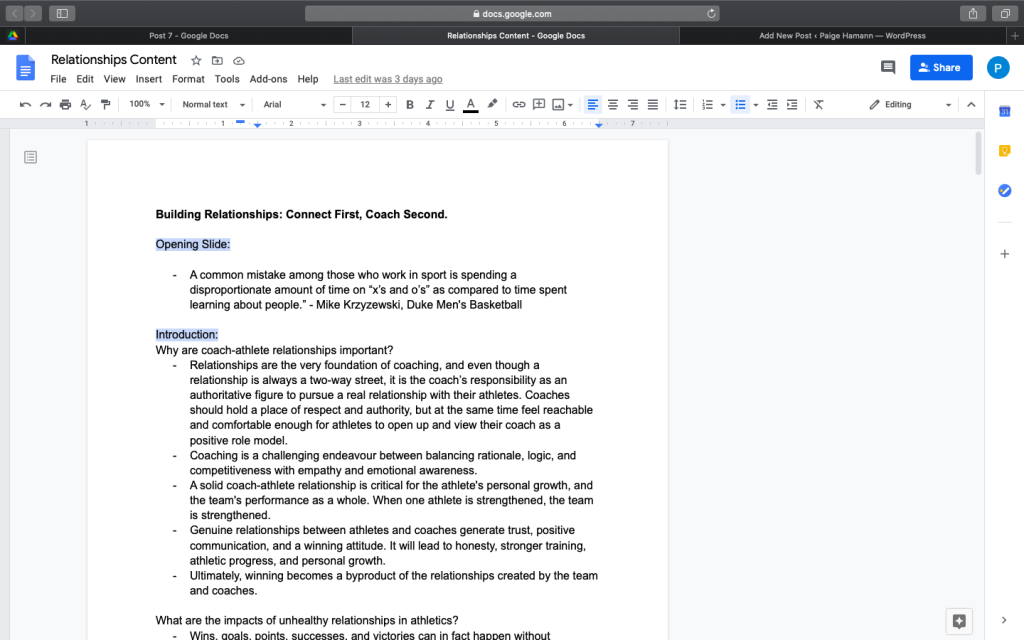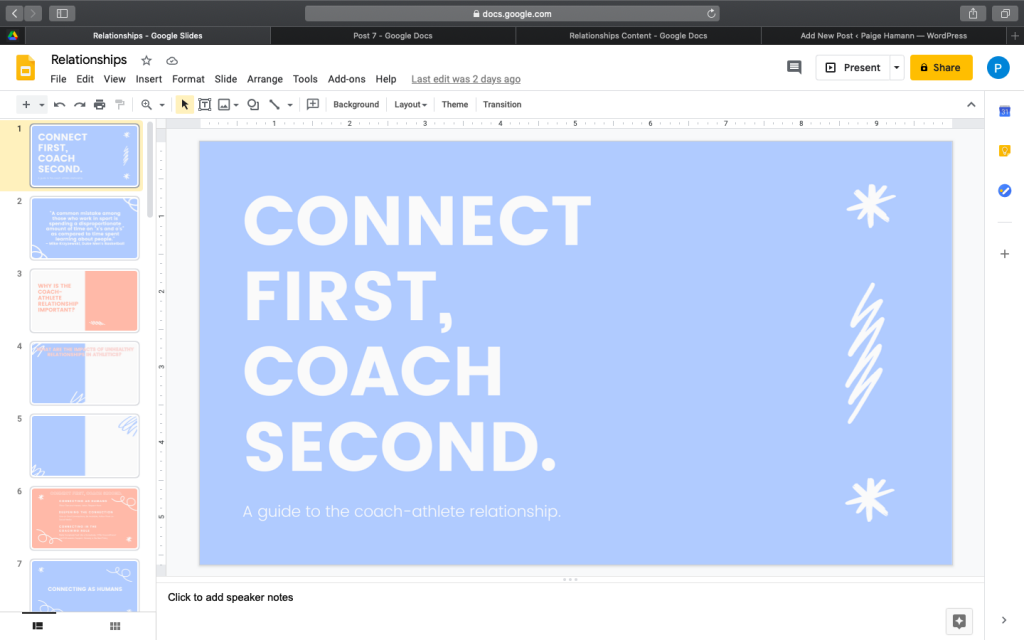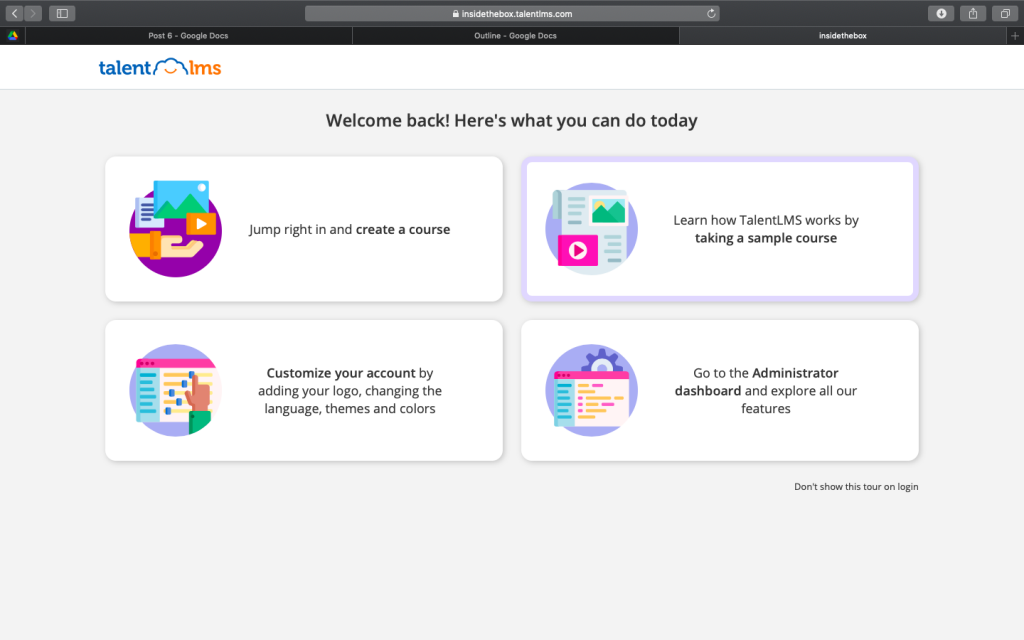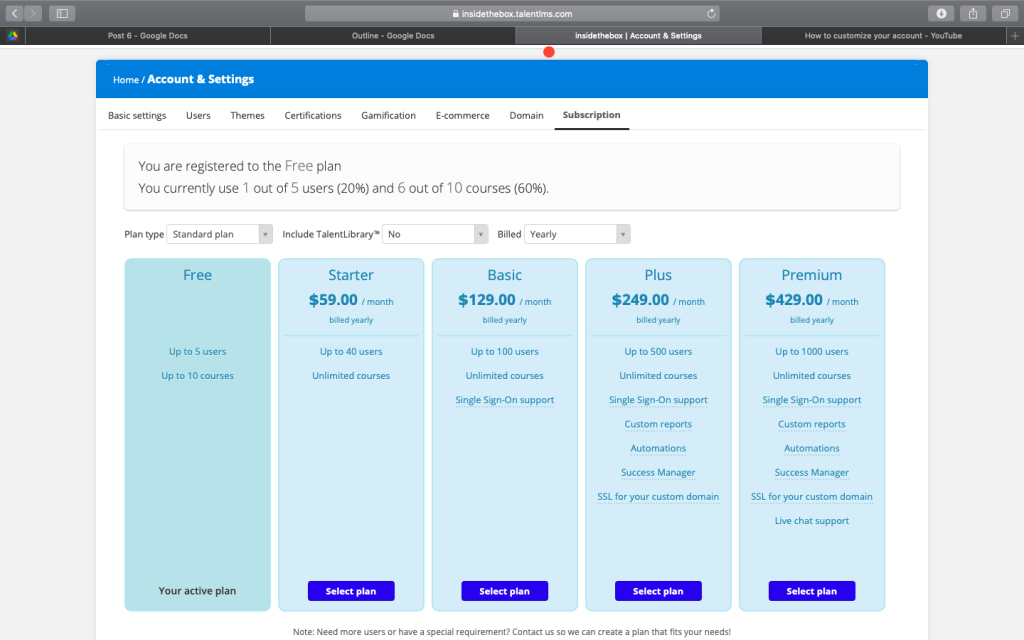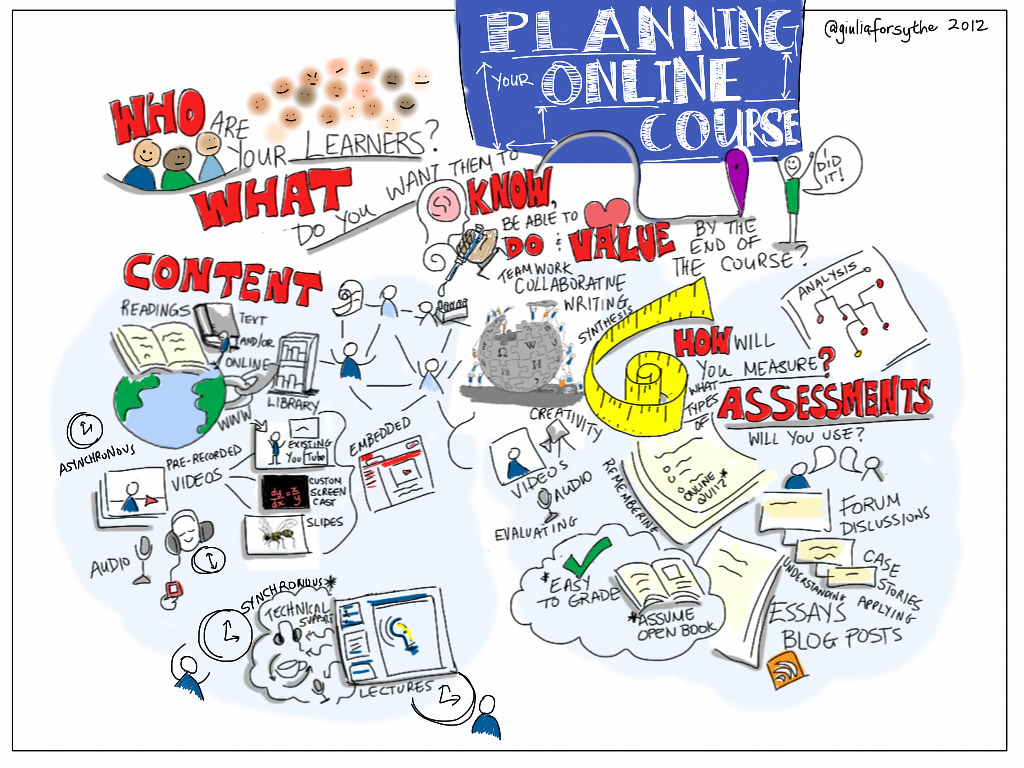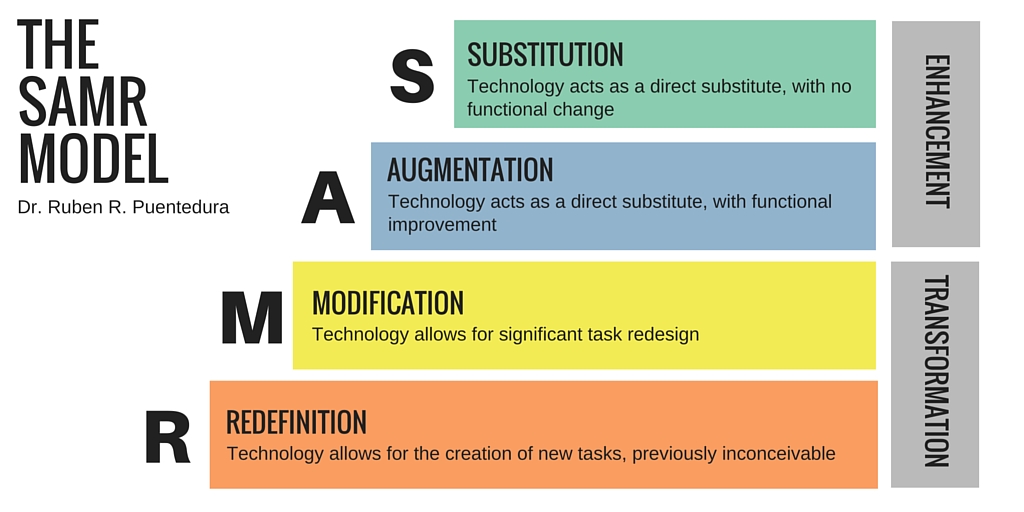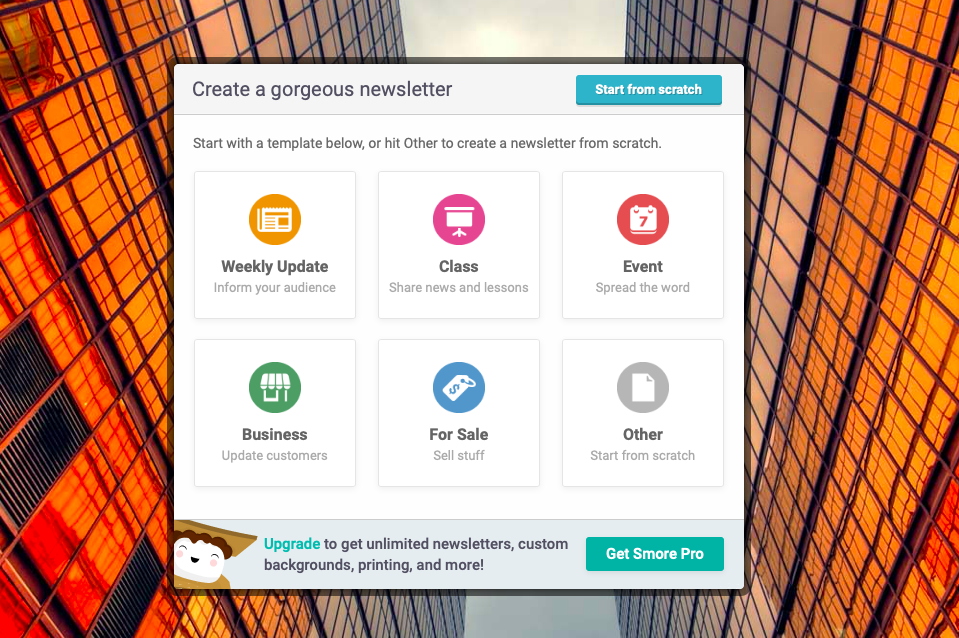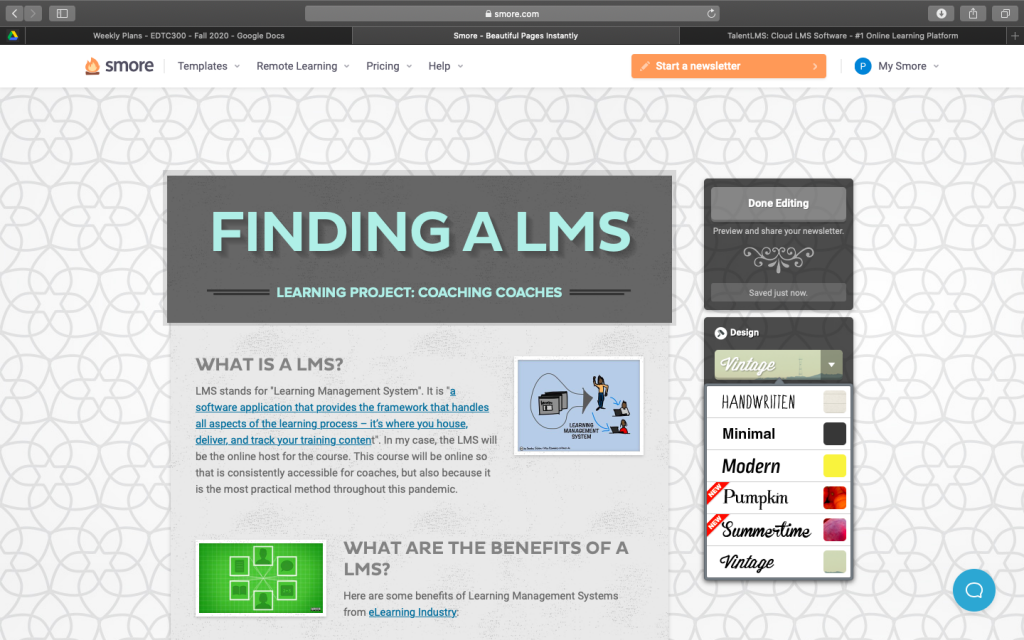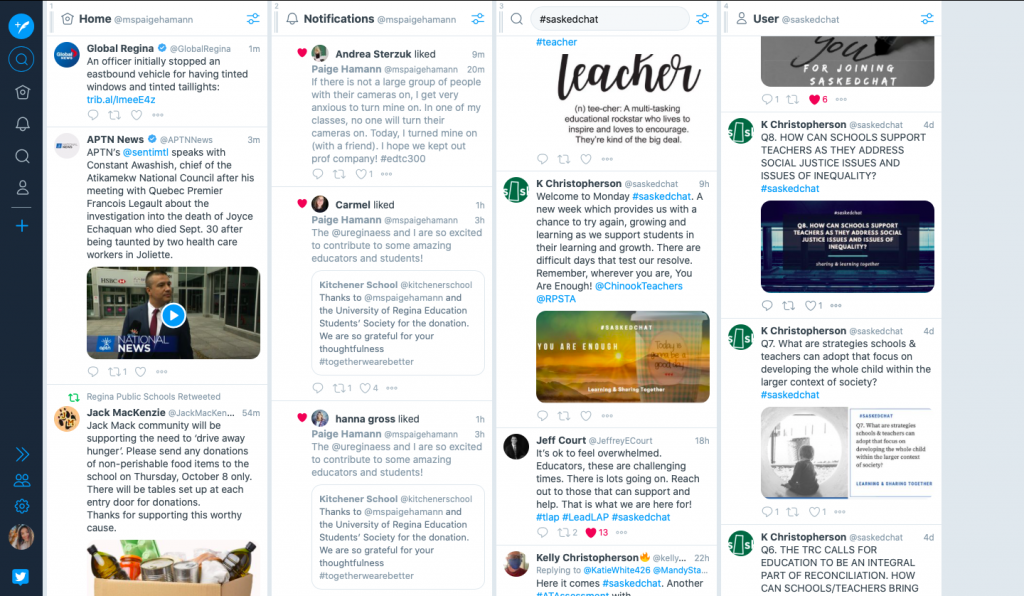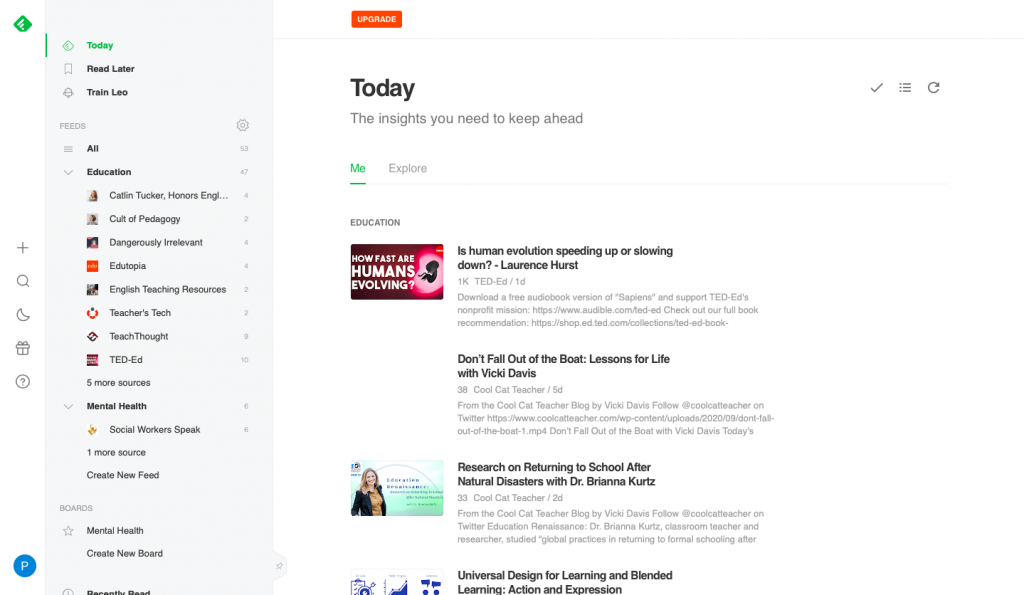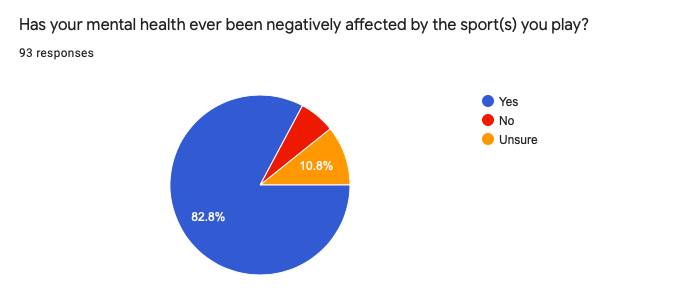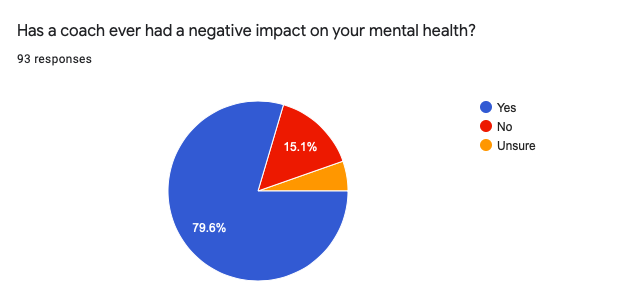Hey everybody!
Thanks for checking out my eighth learning project post! I am really excited to show you what I have been working on this week.
Last week, I created the content for the first module and created templates for the presentation. We are finally getting to the meat and potatoes and I am so excited! It is really starting to come together and I am really excited about the positive feedback I have received.
This week, I worked on the presentation! I finished the slideshow portion of this presentation, but there is still a lot more to be done. I would like the entire presentation to be voiced over, and at some points I think it would be beneficial to have the speaker on the screen. I have not quite started on those pieces yet, so that will be my task for next week! Additionally, I need to create knowledge checks to guide the participants and ensure they are actively listening. As of right now, I would like the knowledge checks to appear at the end of each module.
Anyway, when I was completing the slideshow, I wanted to make sure there were minimal words on the screen. The participants should not be reading the slides, they should be listening to the speaker! That being said, I would like to make sure that there is an option for subtitles because I know that some individuals need or prefer them. I also utilized the animation function to have my text appear on the screen at different times. This way, participants will not be distracted by the points that are yet to come, but will be forced to listen to the point at hand.
To document this portion of my learning project, I wanted to create a time lapse! I have never created one before, so I was not quite sure how to start. I looked for a free online tool that would record my screen and automatically convert it to a time lapse, but I could not find anything. After a quick google search, I realized that if I simply recorded my screen, I could upload those videos into iMovie to create the timelapse. So, I used Screencastify to record my screen and then attempted to import the videos to iMovie.
Screencastify automatically saves recordings to a folder on google drive, and so I downloaded all of my files from there. I have never truly used iMovie, and so I did not know which type of files could be imported. It turns out that the files saved from google were not compatible with iMovie, and so I tried to use multiple websites to convert them to .mp4. That seemed to be taking forever and I could not seem to get it right, so I went back to Screencastify instead of google to see if there was something else I could do. It turns out, Screencastify has the option to export as an .mp4 and so I just used that!
After finally uploading my files to iMovie, I found an article that helped me to adjust the speed on the videos. I followed that and increased the speed of the videos by 2000% because that seemed to be fast enough. From there, iMovie had an option to export directly to YouTube. That was super handy and made the export process much easier.
Ultimately, I was very confused by iMovie. But like everything, there was a quick tutorial for me to follow which helped immensely!
I am really excited to continue working on this module and I can’t wait to see how it all comes together!
Thanks for reading!
x Paige Hamann
